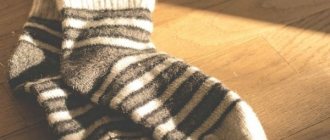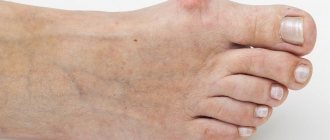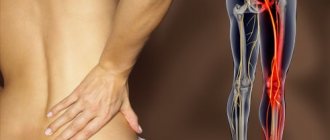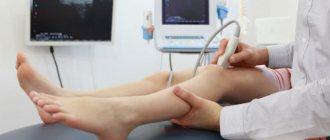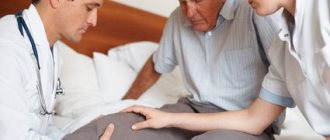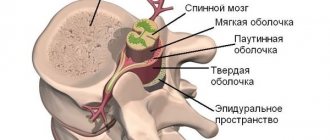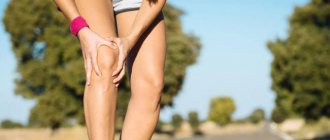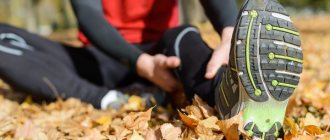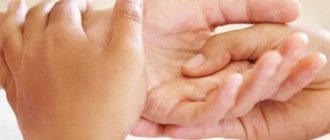Almost everyone has experienced aching pain in their hands. And the reasons for the unpleasant sensations can be different: someone worked a lot with their hands (typed on a computer, knitted or did other small work), someone carried heavy objects, and someone walked for a long time in the cold without gloves. There are also more serious reasons - systemic diseases or joint damage.
In the article we will look at what causes pain in the arms, what to do when the right and left arm hurts, we will find out the causes of aches in the arms and legs and how to deal with them.
General information about the disease
Arthritis of the hands often develops against the background of high functional load on the joints of the hand and their injury. The hand consists of many small bones connected into joints: the wrist, carpometacarpal and metacarpophalangeal. There are many blood vessels and nerves in the hand area, so all pathological processes are painful. ICD-10 disease code (other unspecified arthritis) is M13.
Arthritis of the hands often develops during adolescence as growth occurs and is accompanied by severe deformities. No less often they develop in the second half of life due to hormonal disorders, against the background of sports, domestic and professional injuries. The disease can equally develop in people of any gender.
Causes
It is not always possible to find out why the disease begins. Very often, the cause of arthritis of the hands is acute and chronic injuries to the hand. Acute injuries are often complicated by acute aseptic (without infection) arthritis, ending in complete recovery. But if an infection occurs, the inflammation can be purulent.
With constant minor trauma to the hand, most often professional, a chronic inflammatory process slowly develops with subsequent dysfunction of the joints.
In childhood and adolescence, juvenile chronic arthritis (JCA) can develop, the origin of which most often cannot be determined. After a few years, it leads to the development of serious deformities of the upper limbs. Deformation of the hands is a characteristic symptom of rheumatoid arthritis - an inflammatory process in the joints, the cause of which is an autoimmune process - an allergy to the patient’s own tissues. Genetic predisposition is of great importance in this disease.
Sometimes the disease develops against the background of reactive arthritis after infections of the upper respiratory tract, genitourinary organs, or intestinal infections. The exact causes of such lesions are not known, but they are also often associated with genetic factors. Infectious arthritis of the hands develops with gonorrhea, syphilis and some other infections.
Read more about infectious arthritis in this article.
Metabolic disorders can also cause inflammation of the hand joints. Thus, with disturbances in purine metabolism, gout develops, in which uric acid crystals are deposited in the articular and periarticular tissues, causing inflammation.
Great importance is attached to predisposing factors (triggers) that increase the risk of developing hand arthritis. These include previous infections, hypothermia, high physical activity on the hands, constant intense fine work with the hand, sports activities, stress, bad habits, poor nutrition, and hormonal changes. Arthritis of the hand often develops in tennis players, pianists, guitarists, hairdressers and people in any other professions whose work involves constant stress on the hands.
Muscle pain
The cause of body aches without fever can be musculoskeletal pain. Sometimes they appear due to unusual or excessive physical activity, intense physical activity with “unwarmed” muscles, as a result of prolonged exposure to an uncomfortable position, incorrect posture, hypothermia or nervous strain1,4. In these cases, the muscles do not become inflamed, but the cause of discomfort is biochemical and electrolyte disturbances in muscle tissue1.
Painful sensations against the background of inflammation occur with myositis and mechanical injuries to muscles: bruises, sprains, compression, tears, hemorrhages1,4 - and, as a rule, are local in nature.
Back pain in the lumbar region, sacrum, neck and shoulder girdle is often associated with spinal pathology, osteochondrosis, spondyloarthrosis, radiculopathies, etc.4. In such cases, a source of tension occurs in the muscle, called a trigger point4. In this case, without fever, body aches, weakness and discomfort in the back occur4. A trigger point is defined as a local area of compaction and high sensitivity; when pressing on it, acute pain occurs at the site of impact and reflected pain at a distance from it4.
Muscle aches often occur due to pathology of internal organs. In this case, discomfort is felt in the same place, even if the patient changes body position4. For example, with myocardial infarction, discomfort may occur in the arm, back and lower jaw, and pain with cholecystitis can radiate to the supraclavicular region1. With kidney disease, pain often radiates to the lower back.
The causes of body aches without fever in women are sometimes associated with hormonal changes or diseases of the female genital area. For example, joints may “twist” at night during menopause and premenstrual syndrome. Back pain on the eve of and during menstruation is a manifestation of algodismenorrhea, one of the variants of menstrual cycle disorders. Heaviness in the lower back can be a symptom of inflammatory diseases of the internal genital organs, ovarian cysts and tumors, fibroids, endometriosis and other female diseases5.
Up to contents
Symptoms of hand arthritis
Symptoms of hand arthritis depend on the causes of the disease, its clinical form and the nature of its course. Arthritis can begin suddenly, acutely, with a disturbance in the general condition of the patient, or it can slowly and imperceptibly with gradual destruction of the joints.
First signs
Acute arthritis of the hand begins suddenly with pain, redness and swelling of the tissue. Body temperature may rise, chills, malaise, and headache may appear. This course usually forces you to immediately consult a doctor, so acute arthritis in most cases is completely cured.
The first symptoms of arthritis of the hands are pain, swelling and redness of the tissues.
In the chronic course, vague pain in the hand and wrist area first appears, then morning stiffness of the hands appears - a feeling of tight constricting gloves on the hands, which initially lasts no more than half an hour after sleep. Stiffness goes away after the start of movements. Joint pain is aching in nature; at the beginning of the disease, it appears and then disappears.
It is important to notice the first symptoms in time and immediately seek medical help!
Obvious symptoms
Gradually, the pain syndrome with arthritis of the hands increases, the aching pain becomes constant, swelling and redness appear (not always). The period of stiffness in the morning increases, the movement of the hand is impaired, first due to pain, and after a while due to dysfunction of the joint. When you squeeze the hand, a clicking sound appears, sometimes accompanied by increased pain.
Over time, the hand with arthritis of the hands becomes deformed and loses its functions. It may take on the appearance of flippers (in rheumatoid arthritis) or shorten due to the rapid ossification of growth plates in juvenile chronic arthritis. The small bones of the wrist grow together, ankylosis develops, and the hand stops bending.
Dangerous symptoms
Arthritis of the hands can become more complicated. Therefore, if the following symptoms appear, you should immediately consult a doctor:
- acute onset of the disease with high fever lasting more than 5 days;
- a sudden rise in high temperature against the background of already existing signs of arthritis, increased swelling and redness of the hand - a sign of possible purulent inflammation;
- sharp pain, deformation of the hand and increasing swelling of the tissues are a sign of dislocation or subluxation of the hand.
Causes of aching/pulling pain in the hands
Possible causes of pain are muscular, neurological, pathologies of bones, joints, and periarticular tissues. Sometimes it happens that aching pain in the arm is a syndrome of a disease completely unrelated to the limb (for example, problems with the heart or spine). Let's look at it in more detail next.
Causes related to bones, joints and muscles
There are many factors that cause arm ache, heaviness in the left and/or right arm, or pain radiating to the right arm. They act both collectively and individually.
The most popular reasons:
- Injuries. You can fall unsuccessfully on your hand, hit it, sprain ligaments and even earn a fracture and dislocation. Signs such as constant pain, swelling, inability to move a limb, changes in its shape indicate that it is necessary to urgently consult a doctor. If the bruise is not severe, it goes away on its own in a few days.
- Overvoltage. It is observed in those who constantly perform monotonous actions with their hands (typing, holding a computer mouse, sewing or knitting), or in those who have subjected their hand to a one-time, but unusual load. In such cases, both sharp and aching pain is possible.
- Joint problems. This group includes their various diseases: all kinds of arthrosis, tendinitis, arthritis, bursitis, osteoarthrosis, etc.
- Gout. This disease is more typical for the legs, but it happens that the arms also suffer from it. Diseased joints swell and redden, become hot, the patient experiences terrible pain, which most often manifests itself at night.
Other reasons
However, severe pain in the right and/or left arm may indicate more than just problems with bones and joints. Sometimes the reasons are much more serious.
These factors include:
- Neuritis. The disease is characterized by aching pain along the nerve. The functions of the limb are impaired, and numbness is possible.
- Heart diseases. If you experience pain and weakness, heaviness in your left arm, shooting/twisting in your left arm, severe pain in your left arm, this may be a symptom of an exacerbation of heart disease or even a heart attack. So if you are wondering what to do if your whole left arm hurts, you should rather make an appointment with a cardiologist.
- Spinal diseases. With hernias, protrusions, and osteochondrosis, the nerve roots are often compressed, which leads to pain in the limbs and neck.
How dangerous is the disease?
The hand is the most active working organ of a person, therefore the main danger of arthritis of the hand is dysfunction, the formation of ankylosis (immobility) of the joints of the hand. Dysfunction develops gradually as the disease moves from one stage to another.
Stages
There are 4 stages of the disease, during which functional failure develops:
- Initial.
The stage of inflammation, which cannot always be seen during instrumental examination. This is the beginning of inflammation of the synovial membrane. It thickens and begins to secrete an increased volume of inflammatory exudate. Externally, this is manifested by the appearance of transient pain and slight swelling. - Explicit.
Inflammatory phenomena intensify, the amount of exudate increases, the synovial membrane grows in the form of soft granulations - pannus, occupying a significant part of the joint cavity. Pain and swelling of the tissues increase and become constant. - Formation of soft ankylosis.
The loose tissue of the pannus becomes dense and connects the surfaces of the bone joints, forming their immobility. The flexion of the hand is impaired, and the pain continues to bother me. - Formation of bone ankylosis.
Instead of connective tissue, bone tissue grows and complete immobility of the joint develops with loss of function and disability. The inflammatory process in the joints continues, so pain and swelling remain.
Any form of arthritis has serious complications, so you should not delay treatment.
See how easily the disease can be cured in 10-12 sessions.
Possible complications
At different stages, the disease can cause different complications:
- purulent inflammation involving periarticular tissues in the process; in the absence of adequate treatment, it can develop into sepsis;
- subluxations and dislocations of the affected joints – are accompanied by pain and require emergency assistance;
- shortening of the upper limb in juvenile chronic arthritis;
- complete loss of limb function, disability.
Exacerbation of the disease - what to do?
In some clinical forms, the disease occurs in waves, with exacerbations and remissions. In case of severe exacerbation with severe pain, redness and swelling of tissues, you should:
- take any pill from the group of non-steroidal anti-inflammatory drugs (NSAIDs) - Diclofenac, Meloxicam, Nise, etc.; apply an external agent (gel, ointment) with the same agents to the skin, for example, Diclofenac ointment; Menovazin, an anesthetic solution for external use, is also suitable;
- lie down in bed, give the hand an elevated position, placing a pillow under it;
- call a doctor at home.
Extra-articular causes and pathological processes
Situations where the joints of the fingers or elbows are twisted can be observed when a functional failure occurs in the body systems under the influence of some reason. Very often this happens in the following cases:
- If the human body does not receive sufficient calcium. This contributes to a decrease in the functionality of the musculoskeletal system, which causes disruption of trophic processes in the cartilage tissue of the joints. In this case, the patient may notice that they twist their arm joints at night or when the weather changes. The absence of therapeutic measures is accompanied by the development of pain.
- A rapid decrease in body weight is observed if a person begins to adhere to a mono-diet. This condition leads to loss of fluid and leaching of Calcium from bone structures.
- Increased stress due to hard physical work or systematic exercise accelerates metabolic processes, and therefore the body requires a large amount of micro and macroelements.
- Excessive intake of bad cholesterol into the body from fatty foods causes the development of atherosclerotic plaques on the vascular walls. This impairs the blood supply and supply of nutrients to the cartilage tissue, which causes discomfort and pain.
The symptom of twisting the joints of the arms and legs can become part of the clinical picture with the development of the following pathologies:
- Osteoarthritis. This pathological process is characterized by a chronic, long-term course. It causes destruction of the structure of cartilage tissue, which provides shock-absorbing function, preventing damage to bones during physical activity. In the pathogenesis of the development of this disease, the fundamental point is excess body weight, hormonal imbalance, hypothermia and heavy physical work. In addition to torsion in the joints, the patient has the following symptoms: in the morning, swelling and swelling occurs with a decrease in the range of motion in the joint; the skin surface takes on a red tint; As the disease progresses, pain and crunching in the joint appears when walking.
- Osteoporosis. The disease occurs as a result of the proliferation of osteophytes (small bone elements). They appear in places where they normally should not exist, and as a result, destruction of the articular surface occurs. The main reason may be family history, increased body weight, or hypothermia. In women, this condition can occur when estrogen levels decrease during menopause. The development of this pathology is accompanied by additional symptoms, which are manifested by stiffness of movements after waking up, clicking and crunching when moving the hands, and in the later stages, motor activity is limited.
- Arthritis. This is a group of diseases of different origins. So rheumatoid arthritis becomes a consequence of the penetration of beta-hemolytic streptococcus into the body. At the same time, articular signs are only part of the manifestations, since as it progresses, damage to the heart muscle occurs. Urogenital, respiratory and intestinal infections sometimes cause reactive arthritis. This disease can also be caused by a bacterial, viral or fungal infection. In this case, the patient will experience an increase in body temperature and show signs of a feverish state.
Features of the course of arthritis of the hands in different types of disease
Arthritis of the hand can be a manifestation of various diseases, so its symptoms, course and consequences will also be different.
Post-traumatic and purulent arthritis
The addition of a purulent infection can occur with any type of disease. Most often this happens after open injuries, but sometimes the infection enters the joints through the bloodstream from distant foci of infection. If the infection does not occur, the disease is acute and ends with complete recovery.
The onset of the purulent process is acute, with fever, headache, and malaise. The hand is very painful, it swells sharply, and the skin turns red. Movements are severely limited due to pain. When such symptoms appear, the patient requires surgical assistance.
Chronic post-traumatic arthritis of the hands develops with frequent minor injuries to the hand in people involved in certain sports (tennis players), musicians (pianists), hairdressers, etc. In the absence of help and continued injury, a permanent dysfunction of the joint occurs.
Rheumatoid arthritis
Rheumatoid arthritis
Damage to the small joints of the hands develops frequently. Characterized by symmetrical joint damage and a slowly progressive course. Initially, moderate transient pain and stiffness of movement appear in the morning, lasting no more than half an hour and passing through physical activity. Arthritis of the fingers also develops.
After some time, some swelling appears over the affected area, the pain becomes constant, night pain and severe morning stiffness bother you. The swelling may increase or decrease, but the pain does not go away. Redness of the hand is rare.
If you do not consult a doctor in a timely manner, then deformation of the hands gradually appears - they take on the shape of flippers and completely or partially lose their function.
Reactive arthritis
Develops two weeks after a genitourinary or intestinal infection, sometimes after sinusitis, otitis media or tonsillitis. More often, the pathological process involves the joints of the lower extremities, but sometimes also the upper ones, for example, the wrist joint.
The disease most often occurs acutely, with pain, redness and swelling of the tissue. The prognosis is favorable: with adequate treatment, complete recovery occurs. But sometimes the course is initially chronic, in which case, with a long course, the function of the joint may be impaired.
Chondroprotectors: what are they, how to choose, how effective are they?
Joint pain at rest
Infectious arthritis
Hand damage most often occurs with gonorrheal arthritis. The inflammatory process is acute, with pain, swelling and redness of tissues, an increase in general body temperature, and malaise. Goes away after treatment for gonorrheal infection. Chronic course is rare.
Juvenile chronic arthritis (JCA)
It occurs in childhood and adolescence and can be of multifactorial origin. It often occurs chronically, but there is also a subacute course. A feature of this type of hand arthritis is frequent damage to the joints of the hand and fingers, a long course and the formation of disability over the next seven years.
Deformation of the limbs (shortening) occurs due to the premature closure of bone growth zones.
Gouty arthritis
Metabolic disease - deposition of uric acid salts in articular and periarticular tissues. Inflammation of the small joints of the hands is rarely the only symptom of the disease; usually its appearance is combined with the development of arthritis of other joints, the thumb is especially often affected. During an attack of gout, the area over the affected joint swells, turns red, and the pain is very severe. With frequent repetition of inflammation in the same joint, joint function may be impaired: the hand stops bending.
Gouty arthritis
Causes of aching joints
Mild or moderate joint discomfort is not always a manifestation of a pathological process. Sometimes the symptom has natural causes. Transient aching of the joints is felt when wearing uncomfortable shoes, and in weather-sensitive people - when the weather changes. During puberty, aching sensations in the shoulder and knee joints are caused by insufficient blood supply due to accelerated bone growth.
Significant physical activity
During intense training or heavy work, a common cause of the symptom is overstrain of the musculo-ligamentous system, less often it is caused by microtraumas of the cartilage and synovium. A typical combination of aches in the joints and discomfort in the bones and muscles. Joint and muscle discomfort occurs immediately after impact physical activity or against the background of prolonged monotonous work with constant tension in the same muscle groups. Aches in the joints of the body occur without fever. With large overloads, a moderate violation of the general condition and weakness is possible.
The disorder can last up to several days and, with limited physical activity, gradually decreases until it disappears completely without any treatment. If aches and pains resulting from sports or heavy physical work are replaced by persistent pain, swelling in the wrist, elbow, shoulder, ankle, knee and hip joints, and limitation of usual movements, you should visit a doctor.
Age-related changes in the musculoskeletal system
The causes of moderate aches in bones and joints in older people are degenerative processes with loss of calcium, thinning of bone beams, impaired blood supply to cartilage and a decrease in the volume of intra-articular fluid. Mild discomfort is only the first manifestation of senile joint damage. Typically, periodic discomfort occurs after 45-50 years. By the age of 60-65, an unpleasant ache occurs even with minor exertion, accompanied by stiffness of movement, stooping, shuffling gait, and gradually gives way to pain.
Pregnancy
Complaints about aching joints are more often made in the second half of the gestational age. Pulling, aching discomfort is usually felt in the joints of the pelvis and lower extremities. It intensifies towards the end of the day, after prolonged standing or walking long distances. A night's rest eases the condition. Joint pain during pregnancy is caused by the following reasons:
- Vitamin and mineral deficiency
. The greatest role is played by calcium and vitamin D deficiency, leading to osteomalacia. A feature of the manifestation of the symptom is a feeling of aching not only in the joints, but also in the bones, fatigue, the presence of other signs of hypocalcemia and hypovitaminosis D - caries, brittle nails, muscle weakness, muscle pain, and the frequent occurrence of ARVI. - Significant weight gain
. Joint discomfort is more often a concern for pregnant women with large weight gain or those who are obese. Aches at the end, and eventually in the middle of the day, are felt in the hip joints, knees, ankles, the cartilages of which experience loads several times higher than permissible. To alleviate the condition, women deliberately limit physical activity, which leads to even faster weight gain. - Softening of cartilage and ligaments
. About half of pregnant women experience discomfort in the joints of the pelvis caused by the action of the hormone relaxin. In most cases, the discomfort is in the nature of aching in the pubic area and hip joints. In a pathological course with the development of symphysitis, aching sensations are replaced by pain, which intensifies when pressing on the womb, trying to separate the legs, during sex. The appearance of pain in the pubic area is a serious reason for a visit to an obstetrician-gynecologist. - Carpal tunnel syndrome
. A specific manifestation found in the 2-3 trimesters in almost 20% of pregnant women is the so-called tunnel syndrome. The cause of the disorder is swelling of the soft tissues of the hands and compression in the carpal tunnel of the nerves that pass to the fingers. In addition to aching pain in the small joints of the hand, patients complain of numbness of the skin, tingling, and a crawling sensation. The condition improves with an elevated position of the arms.
Obesity
In overweight people, pressure on cartilage tissue increases, causing it to wear out faster. The degenerative-dystrophic process usually involves large joints of the lower extremities and intervertebral joints. The disorder increases as obesity progresses. Discomfort in the joints first manifests itself in the form of aches without fever by the end of the day, then the increasing destruction of cartilage leads to the development of deforming arthrosis, spondylosis, osteochondrosis with a sharp pain syndrome that limits the patient’s motor activity.
Acute infections
Body and joint aches are one of the early (prodromal) signs of many acute respiratory viral infections. The main causes of joint discomfort are intoxication of the body due to the spread of viruses and bacteria, the accumulation of toxins, and the development of the inflammatory process. Usually the patient complains that the whole body aches, mild and moderate pain is noted both in the joints and in the muscles and bones. The symptom is accompanied by weakness, fatigue, insomnia, and frequent awakenings. Simultaneously with signs of aches and general malaise, chills and hyperthermia are observed.
The most pronounced aches in the joints and body are with the flu. Up to 50% of patients experience constant aching pain in the legs, arms, and torso. The intensity of pain is so high that it becomes difficult for a person to perform the simplest actions - get out of bed, go to another room, pick up a glass of water. The situation is aggravated by high (febrile) temperature and severe headaches. Sore throat and nasal congestion occur after a few hours or even days. Less joint discomfort occurs with parainfluenza, an adenoviral infection.
A feeling of aching in the joints is possible with acute infectious lesions of the gastrointestinal tract - food toxic infections, salmonellosis. Aching joint pains of varying intensity appear suddenly a few hours after consuming contaminated foods and are combined with a sharp rise in temperature, severe chills, and headaches. Aches are preceded by nausea, vomiting, pain in the abdominal cavity, foul-smelling diarrhea with mucous and sometimes bloody impurities.
Joint pain can be a symptom of a wide range of diseases
Collagenoses
Aching joints are a harbinger of most diseases that occur with autoimmune inflammation of connective tissue, including joint tissue. The localization, prevalence, and intensity of unpleasant sensations are determined by the characteristics of a particular collagenosis. The general patterns are the involvement of certain groups of joints in the process, a gradual increase in sensations to excruciating debilitating pain, observed first during movements, and then at rest. Deformation of the articular joints is possible. The main systemic inflammatory causes of the disorder:
- Rheumatism
. The symptom is “volatile”: aching aches and then pain are felt in turn in the large joints of the arms and legs - elbows, shoulders, hips, knees, ankles. The affected areas are swollen. Joint discomfort is often preceded by a sore throat. With treatment, changes in the joints are reversible. - Rheumatoid arthritis
. Unpleasant sensations often appear after 40 years. A typical feeling of aching in the small joints of the hands and feet, combined with noticeable swelling and morning stiffness of movement. In the future, pain and curvature of the articular joints come to the fore. - Systemic scleroderma
. It is characterized by variable localization of aching sensations, the presence of stiffness in the morning in the joints of the hands, elbows, and knees. Aches and pain are usually symmetrical. The swelling is short-lived. Due to skin sclerosis, the mobility of the articular joints is limited, damage to the tendons causes a feeling of friction when moving.
Osteoarthritis
The pain syndrome in the initial stages of the disease is mild and is perceived as discomfort, aching in the joints of the legs, and less often, the arms. The immediate cause of osteoarthritis is degeneration and destruction of cartilage tissue. Typically, pulling or aching sensations without fever appear in adulthood and old age. Aching may begin earlier in the presence of occupational hazards (vibration, heavy physical labor). Gradually, the joints become stiff, the person experiences severe pain and difficulty walking and caring for himself.
Metabolic disorders
The causes of metabolic disorders in which joint pain occurs are insufficient supply of vitamins, minerals, accelerated accumulation or excessive excretion of metabolic products. Unpleasant sensations are caused by inflammatory or dystrophic processes, have varying severity and most often serve as a manifestation of pathological conditions such as:
- Osteoporosis
. When calcium is washed out of bone tissue, the articular surfaces of the bones become fragile, the cartilage becomes thinner, which is accompanied by aching sensations. The pain syndrome increases gradually from mild aches to severe arthralgia, combined with unpleasant sensations in the bones and muscle weakness. The joints that experience the maximum load are most often affected - the hip and knee; the shoulder, elbow, and ankle are less commonly affected. - Gout
. A slight ache in the big toe is already a concern at the preclinical stages of the gouty process. There may be aching discomfort in the knees, elbows, wrists, and fingers. The accumulation of urates in the joint cavity leads to a rapid manifestation of the disease with a change from aching to acute painful joint pain that does not subside for several hours. The affected joint is hot to the touch. There is redness of the skin and limited movement.
Oncological diseases
In acute and chronic leukemia, widespread osteoarticular aches, followed by pain, often occur even before noticeable pathological changes in a general blood test and other clinical symptoms - general malaise, night sweats, fever, loss of appetite, bleeding. The unpleasant sensations are at first periodically aching, then constantly strong, debilitating the patient.
Hodgkin's lymphoma and lymphogranulomatosis are characterized by a combination of aching joints with muscle discomfort, weakness, enlarged lymph nodes and other lymphoid formations. Aching sensations are common, usually moderate. A short period of aching in the knee joint and thigh muscles, which intensifies at night, and with exertion turns into constantly increasing pain with lameness, is observed with osteosarcomas. Other joints are less commonly affected by this pathology.
Joint injuries
Joint aches are provoked by mild traumatic injuries, which cause damage to the ligaments surrounding the joint and bruise of the soft tissues of the articular area. More severe pain occurs when the meniscus is damaged. The symptom is clearly related in time to a blow, a fall, or an awkward movement. Usually discomfort is felt in one affected joint, less often spreading to adjacent areas of the body.
Chronic infectious processes
Possible causes of a feeling of aching joints that occurs without fever or against the background of low-grade fever are long-term infections. In patients suffering from chronic infectious and inflammatory diseases, joint discomfort becomes a consequence of intoxication of the body or direct damaging effects of microorganisms on joint tissue (usually streptococci, mycoplasmas, chlamydia). The appearance or intensification of pain may indicate an exacerbation of chronic tonsillitis, sinusitis, genitourinary infections, adnexitis, pyelonephritis.
Distinctive features of joint pain in common chronic infections that occur with intoxication are moderate severity of joint discomfort, gradual development, periodic intensification and weakening of symptoms. In patients suffering from tuberculosis and hematogenous osteomyelitis, the background for the development of aching painful sensations is an increase in temperature to subfebrile levels, general malaise - fatigue, weakness, weakness. Without treatment, the condition of patients progressively worsens.
Complications of pharmacotherapy
Taking some medications may be complicated by aches and moderate pain in the small joints of the hands. Unpleasant sensations are not accompanied by redness or deformation of the joints. Patients may complain of muscle aches, fever, skin rashes, and other manifestations of drug allergies. Discomfort quickly disappears after discontinuation of the drug that provoked it, and special treatment for complications that arise is less likely to be required. Aches and mild arthralgia are caused by:
- Antibiotics
: penicillins, fluoroquinolones. - Tranvilizers
: phenazepam, diazepam, lorazepam, etc. - Contraceptives
: combined oral contraceptives (COCs).
Rare causes
- Inflammation of the respiratory system
: pneumonia, bronchitis, tracheitis. - Intestinal pathology
: nonspecific ulcerative colitis, Crohn's disease. - Skin diseases
: psoriasis. - Endocrine disorders
: diabetes mellitus, diffuse toxic goiter, hypothyroidism, Itsenko-Cushing's disease. - Autoimmune processes
: Hashimoto's thyroiditis, vasculitis. - Damage to the fascia
: necrotizing fasciitis in the convalescent stage. - Congenital defects of bones and joints
.
Diagnostics
The diagnosis of arthritis of small joints of the hands is established on the basis of examination and questioning of the patient and is confirmed by laboratory and instrumental studies:
- Laboratory tests
- reveal the content of components confirming the inflammatory process, the presence of infectious pathogens and antibodies to them, as well as rheumatoid factor. - Instrumental
:- Ultrasound
– reveals the presence of excess fluid in the joint; - radiography
- the presence of bone changes (narrowing of the joint space, bone ankylosis); - MRI
– presence of changes in soft articular and periarticular tissues; - arthroscopy
- endoscopic examination, allows you to see the inner lining of the joint and all changes in it; During diagnostic arthroscopy, you can take fluid or a piece of tissue for examination.
Treatment of hand arthritis
How and with what to treat arthritis of the hands, the doctor decides after examination and establishing a final diagnosis. Any treatment carried out without examination will not be effective, since different types of arthritis are treated differently. In any case, the patient is prescribed an individually selected comprehensive treatment. It includes:
- drug therapy;
- physiotherapeutic procedures;
- Exercise therapy, massage;
- reflexology (RT);
- traditional methods of treatment.
If conservative therapy is ineffective, surgical treatment methods are prescribed.
Read our article “Treatment of rheumatoid arthritis in women.”
Drug therapy
For hand arthritis, the following medications are prescribed:
- NSAID groups – relieve pain, inflammation and fever. The most effective NSAID drug is Diclofenac, but it causes irritation of the gastric mucosa, so today more modern drugs of this group are prescribed - Meloxicam, Celebrex, Nimesulide in the form of injections (injections), tablets or capsules for oral administration and external agents (ointments, creams, gels). ).
- For severe swelling and pain that cannot be relieved with NSAIDs, glucocorticoid hormones are prescribed in the form of short courses of oral tablets, intravenous infusions or intra-articular injections. They perfectly eliminate all unpleasant symptoms.
- In subacute and chronic cases, drugs that suppress immune processes (basic therapy) are prescribed: Methotrexate, Sulfasalazine, Azathioprine, etc.
- Medicines from the group of biological agents that include antibodies and cytokines (MabThera) also suppress immune reactions.
- If the cause of the disease is an infection, drugs are prescribed that suppress it.
- Antihistamines to reduce allergies - Claritin, Erius, Cetrin, etc.
- Chondroprotectors - agents that restore cartilage tissue of joints - Teraflex, Dona, etc.
- Vitamins and minerals that restore metabolism.
Drug treatment for arthritis of the hands is carried out using drugs from the NSAID group, drugs that suppress immune processes, and other drugs.
Physiotherapeutic procedures
Depending on the stage of the disease, physiotherapeutic procedures are added to the drug treatment of arthritis of the hands, which significantly enhance the therapeutic effect and accelerate the process of tissue restoration:
- at the stage of inflammation
- electrophoresis and phonophoresis with painkillers, anti-inflammatory drugs; - at the recovery stage
- magnetic therapy, laser therapy, thermal procedures (paraffin, ozokerite).
In a state of stable remission of arthritis of the hands, sanatorium-resort treatment is recommended - mud, baths in combination with hardware physiotherapeutic techniques. Kavminvod sanatoriums are perfect.
Crunching in joints - when to worry
Intra-articular injections of hyaluronic acid
Massage
These procedures are done in a state of remission. Both therapeutic massage performed by a massage therapist and self-massage are very effective. You can independently perform the following most effective, but at the same time gentle massage movements every day after applying massage oil to your hands:
- rubbing the back surface: with sliding movements of one hand, rub the back surface of the other in the direction from the wrist to the fingertips; then change hands;
- rubbing the side surfaces of the fingers: interlock your fingers and move your hands so that the side surfaces of the fingers are rubbed;
- rubbing the palms: with the fingers of one hand, forcefully rub the palms of the other in the direction from the wrist to the fingers;
- soft massage movement “hand washes hand”;
- stroking hands with light sliding movements.
Daily massage improves blood circulation, helps revitalize metabolic processes and restore tissue.
Physiotherapy
Physical therapy (physical therapy) complexes are prescribed by a doctor. It is better to undergo the first training sessions under the supervision of a physical therapy instructor, and then continue at home. The following exercises will help improve your well-being:
- rolling an apple or a tennis ball
- roll a medium-sized apple (to fit in the palm) or a tennis ball between the palms, actively pressing on the soft tissues; also actively roll the apple on the table; - rolling chestnuts between palms and fingers
- take 2-3 chestnuts at once and roll between palms and fingers, as well as on a smooth table surface; - clenching and unclenching a fist
- clench your palms into a fist and hold it tense, then sharply unclench it with all fingers straightened like a fan; repeat 10 times; - beating out the rhythm with your palm
- with open palms, beat out any clear rhythm on the table (march, rap, whatever you like); - flexion-extension
- place your elbows on the table, raise your forearms parallel to each other; make a simultaneous tilt of the hands forward, then back, right and left; repeat everything 5 times.
Therapeutic gymnastics helps improve blood circulation, restores the strength of muscles and ligaments, improves joint mobility, and prevents the destruction of cartilage. It is carried out in a state of remission.
Reflexology
Therapeutic exercises with a ball and reflexology will help cure arthritis of the hands
An ancient Chinese method, successfully integrated into modern medicine. It is based on a reflex effect on the entire body, as well as on individual organs and tissues through certain points on the human body. Most often, the effect is carried out using acupuncture (acupuncture), but you can also cauterize (warm up) the points with wormwood cigarettes, do acupressure and use other techniques. This method has proven itself in the treatment of hand arthritis.
Traditional methods
Folk remedies (herbal decoctions and tinctures) are also actively included in complex treatment as additional methods. But the doctor prescribes them ,
self-medication should be excluded. Traditional recipes:
- compresses from dry elm bark; grind the raw materials, grind them into powder, dilute with water to a pasty state, transfer to a napkin and apply to the affected joints; Apply polyethylene and insulation on top and leave overnight; perfectly relieves pain and swelling;
- ointment from dried poplar buds; crush the raw materials in a mortar, add the same amount of melted butter and rub into your hands several times a day; analgesic effect.
Surgery
In the acute period, surgical treatment is carried out for a purulent inflammatory process: the pus is removed, the joint cavity is washed with an antiseptic solution.
Surgery is sometimes required for long-term, wave-like arthritis with severe pain and swelling: part of the synovial membrane is removed (synovectomy). This gives a positive result and brings relief to the patient.
When a complete loss of joint function occurs, endoprosthetics is performed - replacing the destroyed joint with an artificial one.
Read about new treatments for rheumatoid arthritis in this article.
Treatment
Help before diagnosis
For aching joints associated with physical activity, special treatment is not required; a long rest with dosing of loads is sufficient. Unpleasant joint sensations that occur during pregnancy usually go away on their own after pregnancy or are corrected by controlling weight and taking vitamin and mineral supplements. Elderly and obese patients are advised to change their lifestyle: adequate physical activity, a diet of appropriate calorie content with a sufficient content of plant foods.
Aches in the bones, joints and muscles, combined with general malaise and fever, increased aching and pulling sensations to the point of severe pain, and the development of persistent pain are indications for consulting a doctor. To reduce joint discomfort caused by ARVI, it is recommended to rest, drink enough water, rosehip infusions, and dried fruits. Until serious diseases that provoke aching joints are excluded, self-medication with painkillers, long-term unsuccessful application of compresses, lotions, decoctions, etc. are unacceptable.
Conservative therapy
You can get rid of joint pain with the right treatment, aimed at eliminating the cause of the disorder and individual parts of the mechanism of its development. Etiopathogenetic therapy is usually supplemented with symptomatic medications that quickly reduce the severity of nagging and aching pain. The treatment regimen for diseases that occur with aching joints may include:
- Antimicrobials
. Basic therapy for infections is based on the prescription of antibiotics to which the pathogen is susceptible. In severe cases, broad-spectrum medications are used until the sensitivity of the microorganism is established. - Nonsteroidal anti-inflammatory drugs
. They reduce the production of inflammatory mediators and thereby inhibit inflammatory processes in the joints. By influencing central pain receptors, they reduce the degree of joint discomfort. Used in the form of tablets, ointments, gels. - Corticosteroids
. They have a strong anti-inflammatory effect. Hormonal therapy is the basis for the treatment of systemic collagenosis. In severe and resistant forms of the disease, corticosteroid drugs are combined with immunosuppressants to enhance the effect. - Chondroprotectors
. They act as a substrate for the synthesis of protein glycans, a sufficient amount of which increases the elasticity of articular cartilage. Nourishes cartilage tissue and restores its damaged structure. Intra-articular administration of drugs is possible. - Xanthine oxidase inhibitors
. Used as anti-gout drugs. They block the key enzyme necessary for the synthesis of uric acid, thereby reducing its concentration in the body and promoting the dissolution of existing urate deposits. - Vitamin-mineral complexes
. Recommended for the treatment of aching joints caused by metabolic disorders. The most commonly used drugs contain calcium and vitamin D. They are also an element of complex therapy for inflammatory and metabolic diseases. - Chemotherapeutic agents
. They serve as the basis for most treatment regimens for various types of oncohematological pathologies. Depending on the clinical variant and severity of the neoprocess, they are combined with radiotherapy and surgical interventions.
Treatment approach in our clinic
At our clinic, specialists have developed a special approach to treating this disease. After a thorough examination of the patient (including an MRI), a comprehensive treatment is prescribed, which includes:
- modern developments in medical science: the latest medications and regimens for their use, physiotherapeutic and other non-drug methods that eliminate the main manifestations of the disease and suppress its progression;
- Traditional oriental methods influence the body as a whole, restoring the functioning of all its organs and systems, which leads to the suppression of the pathological process in the joints.
This combination allows you to quickly and painlessly relieve the patient of all unpleasant symptoms, and then suppress the progression of the disease and restore joint function. Details about the treatment methods used can be found on our website.
We combine proven techniques of the East and innovative methods of Western medicine.
Read more about our unique method of treating arthritis
Symptomatic treatment
Treatment is almost always comprehensive: taking vitamins and medications, ointments for external use, physiotherapy and special exercises. In some cases, a diet is indicated; in the worst cases, surgery is indicated.
Medicines
Each disease requires a specific treatment protocol. For example, for joint stiffness and nerve compression, centrally acting muscle relaxants (Tizanidine) are prescribed. These medications relieve painful muscle spasms.
For severe pain and severe inflammation, steroid hormones (Hydrocortisone) are prescribed. It inhibits hypersensitivity reactions and reduces pain at the site of inflammation.
Carefully! Long-term use of steroids leads to complications, so competent doctors for joint diseases try not to prescribe them for a long course.
If the situation is not critical, doctors prescribe non-steroidal anti-inflammatory drugs (Meloxicam). Such drugs relieve pain, stop inflammation, and reduce fever.
You should not use medications yourself without a doctor’s prescription - this may worsen the situation!
Folk remedies
Traditional medicine is useful as an addition to medication and physiotherapeutic treatment.
The following remedies are used to treat pain in the joints of the hands:
- Bay leaf decoction. For preparation you will need about 30 leaves. They are poured with two glasses of boiling water and simmered over low heat for 5 minutes. Next, pour into a thermos and leave for 4 hours. The resulting decoction removes salt from the body and relieves pain. It is drunk in small sips every few hours, divided into 3 days. Repeat the course after 1-2 weeks.
- Compresses. For them you will need yellow clay. It is mixed with warm water, applied in a thick layer to the sore joints, wrapped in cling film, and on top with a woolen cloth (or gloves/mittens are put on). Keep for several hours or leave overnight. Clay relieves pain and nourishes the sore spot with beneficial microelements. The course of treatment is 1 week.
- Honey and lemon. 3 lemons are crushed with peel and poured boiling water. After cooling, add 3 tablespoons of honey and stir. Take 1-2 tablespoons daily for a month. Vitamin C, contained in lemons, and folic acid, which is part of honey, have a beneficial effect on joints and the entire body.
General clinical recommendations
To prevent exacerbation of the pathological process and its progression, the following recommendations must be followed:
- follow all doctor's orders;
- conduct courses of anti-relapse treatment;
- promptly treat all acute and chronic diseases;
- avoid colds and hypothermia, especially of the hands;
- do not lift heavy objects, do not engage in long-term painstaking activities involving the hands;
- avoid prolonged stress;
- get rid of bad habits.
Prevention
Prevention of arthritis of the hand is especially important for people with a family history (close relatives suffering from this pathology). To prevent the development of the disease, you need:
- lead a healthy active lifestyle, eat right;
- do not overload your hands with heavy physical work and long, tedious painstaking work;
- do not smoke, do not abuse alcohol;
- avoid hypothermia of hands;
- promptly treat all diseases and hormonal disorders.
How to eat healthy
Only gout requires a special diet; it is imperative to adhere to its requirements. For other types of arthritis, a healthy diet is sufficient. Fatty meat and dairy products, fried, spicy, smoked, and canned foods should be excluded from the diet. It is necessary to limit sweets, baked goods, and sweet carbonated drinks. The diet should contain a lot of fresh vegetables, fruits, cereals, and low-fat animal products.
Frequently asked questions about the disease
I have arthritis in my hand since childhood. Will they take me into the army?
If the function of the joint is impaired, then no.
I had arthritis in my wrist after gonorrhea. Can it be completely cured?
Infectious arthritis can be completely cured if the correct treatment is prescribed in time.
What is the best way to smear your brushes so that they don’t hurt?
You need to consult your doctor. The best painkillers are Voltaren emulgel and Menovazin rubbing solution.
Arthritis of the hand joints is best treated in the early stages. But if you were unable to seek medical help in time, then do not be discouraged: everything can be treated.
At the Moscow Paramita clinic, arthritis of the hands is treated at any stage. Our patients forget about pain after the first acupuncture sessions. Further rehabilitation therapy takes place in comfortable conditions and is completely painless. We will restore your health!
Literature:
- Shelepina T.A. Rehabilitation therapy in the complex treatment of JRA. Pediatric rheumatology. !995, 13 – 16.
- Blokhin V.N. Trauma and reconstructive surgery of the hand. Orthopedist, traumatologist and Prosthetics, 1973, 6, 63-38.
- Woog PHNFular Publishers, Basle, 1978.
Themes
Arthritis, Joints, Pain, Treatment without surgery Date of publication: 11/17/2020 Date of update: 04/03/2021
Reader rating
Rating: 4.67 / 5 (3)

